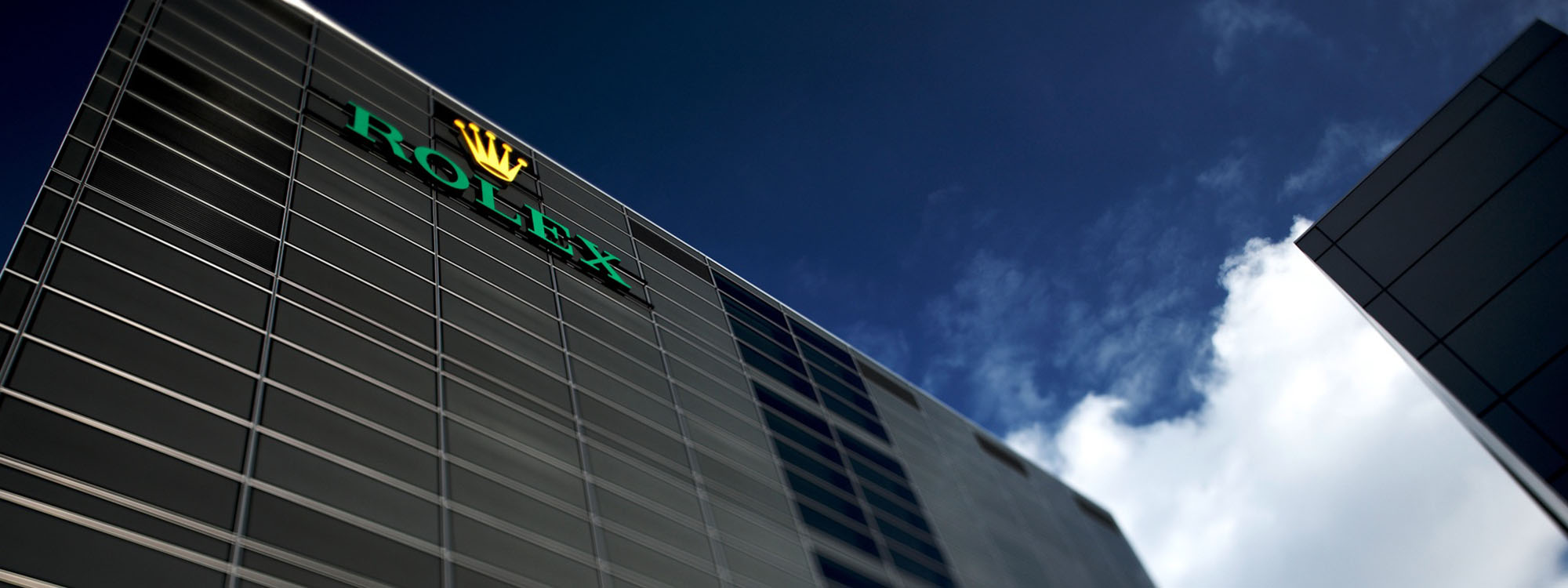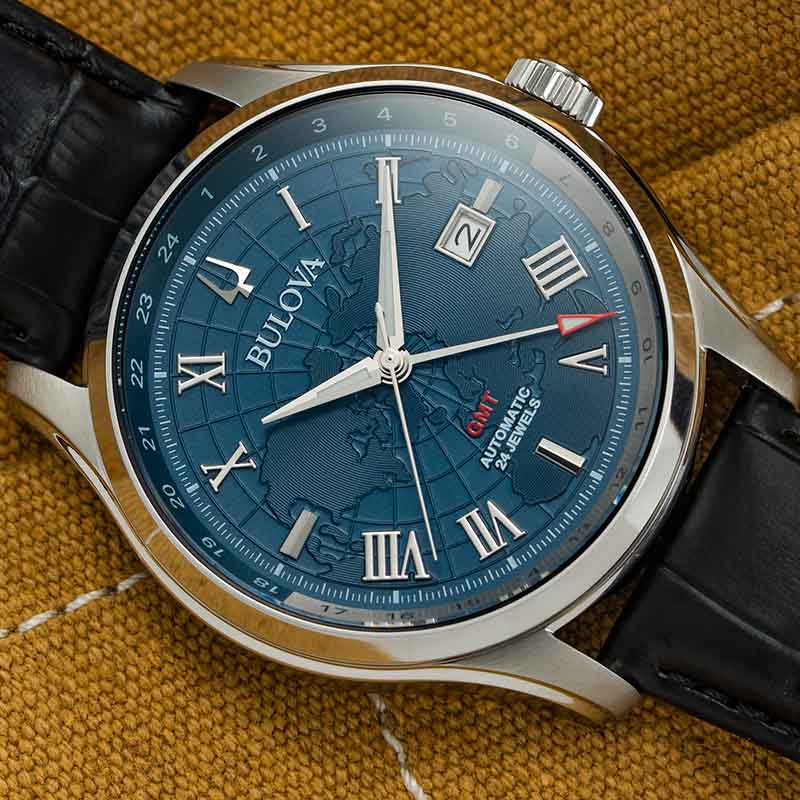Rolex watches are among the most coveted status symbols in the world, and the Rolex brand is one of the most valuable and globally recognized properties in the fashion and luxury market. So how is it possible that the Rolex watch company, which according to industry estimates earned more than $13 billion in revenue from its watch sales in 2021, is actually a non-profit entity? In truth, it’s a bit more complex than that. Scroll down for the answers to some burning questions you may have had about Rolex and its corporate structure.

Is Rolex really a non-profit company?
Yes and no. Rolex S.A. is the name of the conglomerate that owns all of the interconnected firms that make up the Rolex brand (yes, that includes Rolex “sub-brand” Tudor). That company (the “S.A.,” a common abbreviation in the Swiss corporate world, stands for “Société Anonyme,” denoting a limited liability company) is fully owned by the Hans Wilsdorf Foundation, a charitable organization established in 1944. Wilsdorf, the founder of Rolex, formed the Foundation in commemoration of his wife, Florence May Wilsdorf-Crotty, who passed away that same year.
Who was Hans Wilsdorf?

The most famous Swiss watch brand in the world was originally not even Swiss: it was founded by a German in the United Kingdom. Hans Wilsdorf (1861-1960, above), an orphan raised by his uncles in Kulmbach, Germany, learned entrepreneurship and self-sufficiency early in life, and began his career in the Swiss watch industry in 1900 when he started as a clerk at the watchmaking firm of Cuno Korten in La Chaux-de-Fonds, responsible for the maintenance and accuracy of hundreds of pocket watches per day. In 1905, two years after moving to London, Wilsdorf (below) partnered with another businessman named Alfred Davis to establish Wilsdorf & Davis, the company that would become Rolex. Wilsdorf & Davis, based in London’s Hatton Garden commercial district, was founded with a mandate to make reliably precise watches at affordable prices.
Why is the company called Rolex?
In 1914, days before the outbreak of World War I, Wilsdorf changed the name of the company to “The Rolex Watch Company Ltd.” and shortly thereafter shifted its focus from pocket watches to “wristlets,” or wrist-worn watches. Wilsdorf, an early believer in the commercial potential of wristwatches, would later state in an autobiography that the name “Rolex” came to him via a “genie” whispering in his ear while he was running an array of different alphabetical combinations through his mind during a horse-drawn carriage ride through London. As many would note thereafter, it was also a brand name that was easy to spell and to pronounce in many languages while also being short enough to fit elegantly on a watch dial. It has also been suggested that Wilsdorf appreciated the onomatopoeic nature of the name, like the sound of a mechanical watch movement being wound.
What made Rolex watches so famous?

In response to England's heavy post-war export duties on materials like gold and silver, which Rolex was using for watch cases, Wilsdorf moved the company's HQ to Geneva in 1919. Rolex’s offices and main manufacturing hub remain in the Canton of Geneva today, the latter in the suburb of Plan-les-Ouates. Rolex’s early 20th-century innovations, like the waterproof Oyster case, in 1926, and the self-winding “perpetual” movement, in 1931, as well as its trendsetting designs, have impacted the whole of the watch industry and it continues to play a leading role in watchmaking, and watch marketing, in the modern era. Its most iconic watch models, like the Datejust, Submariner, Cosmograph Daytona, and GMT-Master (above), have largely defined the watch genres they inhabit.
When did Rolex spin off Tudor?

With an eye toward making watches that would be affordable while still maintaining a high level of quality, Wilsdorf registered the Tudor brand trademark in 1926, and began running the Tudor company as a subsidiary brand of Rolex in 1946. Tudor watches were the only watches on the market at the time that featured reliable third-party movements inside the famed waterproof Rolex Oyster case and were initially more geared toward the tool watch market than were Rolex timepieces, which already enjoyed a reputation as luxury items. In recent years, Tudor has carved out its own distinct fan base with popular models like the Black Bay (above), and has increasingly begun relying on its own recently established, brand-specific manufacturing facility for its movements.
Who actually runs Rolex?
In 1944, the widowed Wilsdorf was not only Rolex’s founder and its leading creative force; he was also the sole owner. All of his shares became the property of the Foundation, and upon Wilsdorf’s own death in 1960, its five trustees (today there are eight) took over as custodians of Rolex S.A. business; this included the Foundation’s charitable interests, many of which were originally intended to remain secret to the public. The Hans Wilsdorf Foundation has operated Rolex, as a private company without any shareholders, ever since. Since 2015, industry veteran Jean-Frederic Dufour (below, whom this writer met during his previous stint at Zenith) has served as CEO, reporting to a Board of Directors.
 Under Swiss law, which differs from American law regarding non-profits, Rolex is not obligated to publicly disclose financial information, including profits or charitable donations, and does not even have to pay taxes on its profits as a company. As a result, industry reporting on Rolex and its pertinent numbers is notoriously challenging. In some quarters, whispered rumors abound that Rolex, as a corporate entity, has so much cash stashed away that it could operate for years with no incoming revenue, but of course, this is impossible to know for sure.
Under Swiss law, which differs from American law regarding non-profits, Rolex is not obligated to publicly disclose financial information, including profits or charitable donations, and does not even have to pay taxes on its profits as a company. As a result, industry reporting on Rolex and its pertinent numbers is notoriously challenging. In some quarters, whispered rumors abound that Rolex, as a corporate entity, has so much cash stashed away that it could operate for years with no incoming revenue, but of course, this is impossible to know for sure.
How big is Rolex?
 Here is what we know. Today, Rolex maintains four official sites in Switzerland: the company’s world headquarters in the city of Geneva, as well as manufacturing facilities in Plan-les-Ouates, just outside the city in the Canton of Geneva (cantons are the equivalent of states); in Chêne-Bourg, also within the Canton; and in Bienne, a municipality in the Canton of Bern where other watch manufacturers have set up shop, most notably the Swatch Group. Because of the aforementioned secrecy associated with Rolex’s status as a private company owned by a charitable foundation, individual numbers from each of these facilities are hard to come by. On its website, however, Rolex claims “more than 9,000 employees” are spread out across the four sites. Rolex doesn’t report how many watches it makes per year, but industry reporting (based on wholesalers’ numbers and other metrics, such as COSC chronometer certificates issued) estimates the figure to be between 800,000 and 1.05 million annually. In 2021, the last year for which estimates are available, Rolex made $13 billion in revenue. To maintain the generous tax-free status it enjoys as a company owned by a private charitable trust, Rolex donates a large portion of these profits to charitable and social causes in Switzerland. The company also spends tens of millions of dollars each year on advertising, much of which is tied into the brand's plethora of high-profile sponsorships of sporting events.
Here is what we know. Today, Rolex maintains four official sites in Switzerland: the company’s world headquarters in the city of Geneva, as well as manufacturing facilities in Plan-les-Ouates, just outside the city in the Canton of Geneva (cantons are the equivalent of states); in Chêne-Bourg, also within the Canton; and in Bienne, a municipality in the Canton of Bern where other watch manufacturers have set up shop, most notably the Swatch Group. Because of the aforementioned secrecy associated with Rolex’s status as a private company owned by a charitable foundation, individual numbers from each of these facilities are hard to come by. On its website, however, Rolex claims “more than 9,000 employees” are spread out across the four sites. Rolex doesn’t report how many watches it makes per year, but industry reporting (based on wholesalers’ numbers and other metrics, such as COSC chronometer certificates issued) estimates the figure to be between 800,000 and 1.05 million annually. In 2021, the last year for which estimates are available, Rolex made $13 billion in revenue. To maintain the generous tax-free status it enjoys as a company owned by a private charitable trust, Rolex donates a large portion of these profits to charitable and social causes in Switzerland. The company also spends tens of millions of dollars each year on advertising, much of which is tied into the brand's plethora of high-profile sponsorships of sporting events.
Where do Rolex’s sponsorship dollars go?

Hans Wilsdorf was a master marketer and Rolex has been big in the area of brand-building sponsorships from its earliest days. Among its most historical initiatives were its partnership with British swimmer Mercedes Gleitze, who famously wore a Rolex Oyster watch in her 1927 bid to become the first woman to swim the English channel; and the company’s supplying of early Rolex Explorer watches to accompany Sir Edmund Hillary’s milestone summit of Mount Everest in 1953. Rolex became the official timekeeper of auto racing’s Daytona 500 in 1962 (naming its famous chronograph watch after the race a year later), kicking off a long string of motorsport sponsorships. Today, Rolex maintains a strong branding presence in several sports, including golf, tennis, motor racing, equestrian, and yacht racing. Rolex’s multigenerational group of “testimonees” (aka brand ambassadors) include world-renowned figures such as Arnold Palmer, Jack Nicklaus, Tiger Woods, and Jordan Spieth in golf, Bjorn Borg and Roger Federer in tennis, Sir Jackie Stewart and Mark Webber in auto racing, and Sir Ben Ainslee in Olympic sailing. The worldwide sporting events for which Rolex acts as timekeeping partner include the 24 Hours of Le Mans, the Championships at Wimbledon, and the Masters, Ryder Cup, and PGA Championships.
What charities does Rolex support today?

Rolex devotes much of its charitable support to the two major initiatives it has established under the umbrella of the Hans Wilsdorf Foundation: the Rolex Perpetual Arts Initiative and the Rolex Perpetual Planet Initiative. The former is dedicated to fostering artistic and cultural excellence in the areas of music, cinema, architecture, and other creative fields. In 2002, Rolex established its own Mentor and Protegé Arts Initiative, inspired by the company’s existing mentoring program for watchmakers, which matches up emerging talents in the “global creative community” with acknowledged masters in their field to promote the passing on of artistic disciplines in more than 100 countries.

Established fairly recently, in 2019, Rolex’s Perpetual Planet Initiative solidifies a nearly century-long tradition of supporting ocean exploration and environmental research and preservation, starting with Gleitze’s English Channel swim and continuing with Rolex’s role in two record-setting submersible dives into the Mariana Trench, the deepest part of the world’s oceans — the first by the Bathyscaphe Trieste in 1960, the second by movie director James Cameron’s Deepsea Challenger in 2012. The focus of the Perpetual Planet Initiative, according to Rolex, has evolved from “exploration for the sake of discovery to protecting the planet.” Projects under the Perpetual Planet umbrella include the “Mission Blue” initiative that is devoted to shielding endangered marine life in protected “Hope Spots,” and a partnership with the National Geographic Society for a series of scientific expeditions into the impact of climate change on natural resources such as mountain ranges and rainforests. The Rolex Awards for Enterprise, another branch of the Initiative, annually recognizes "guardians of the future" in the fields of science and health, the environment, applied technology, exploration, and cultural heritage.






















































0 Comments